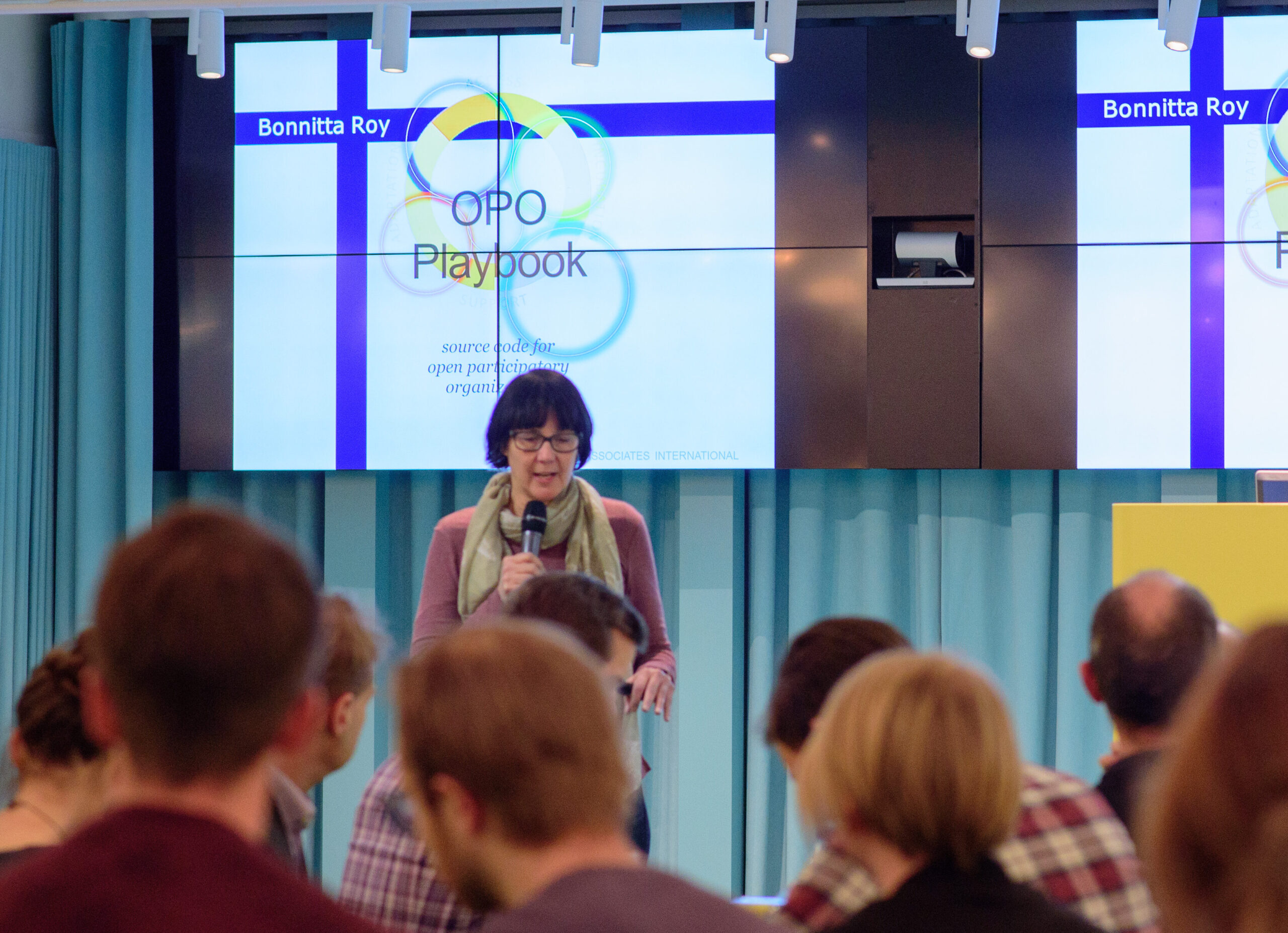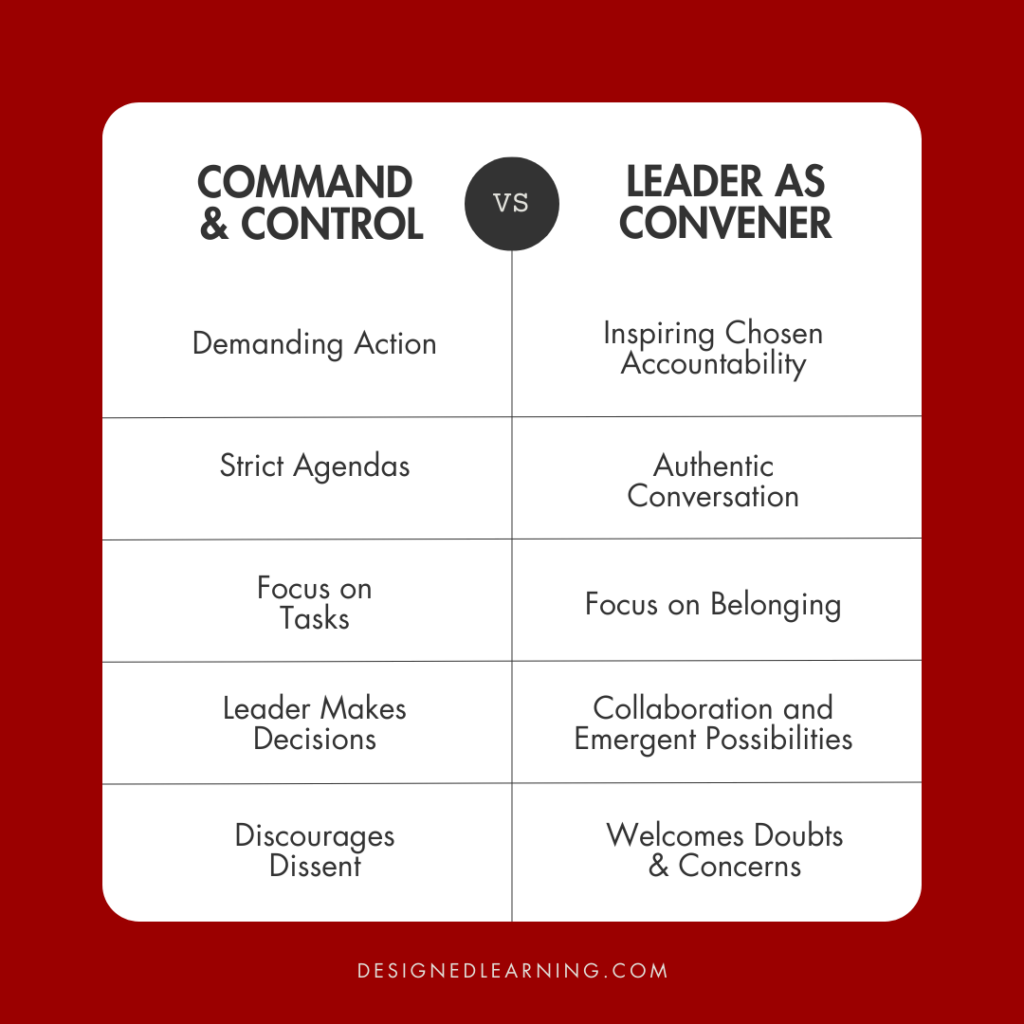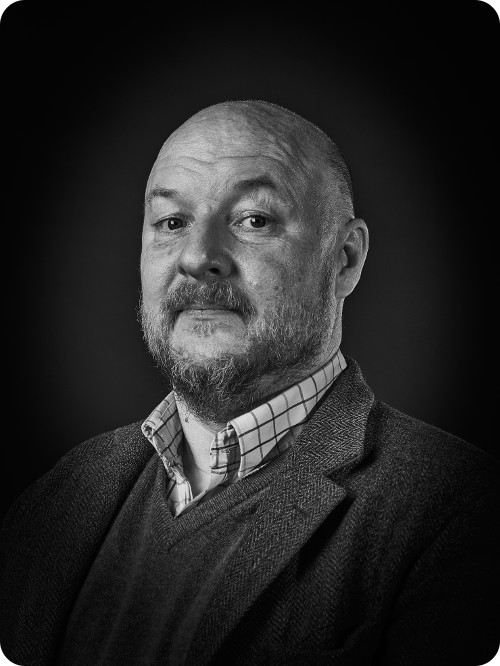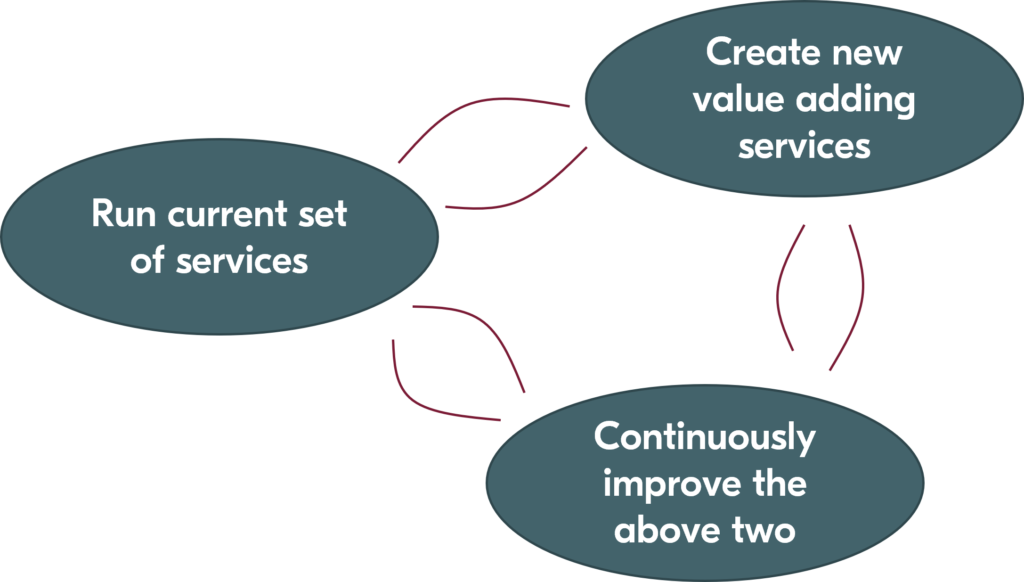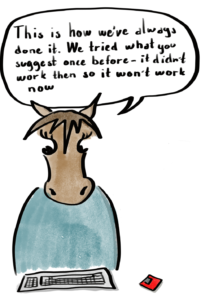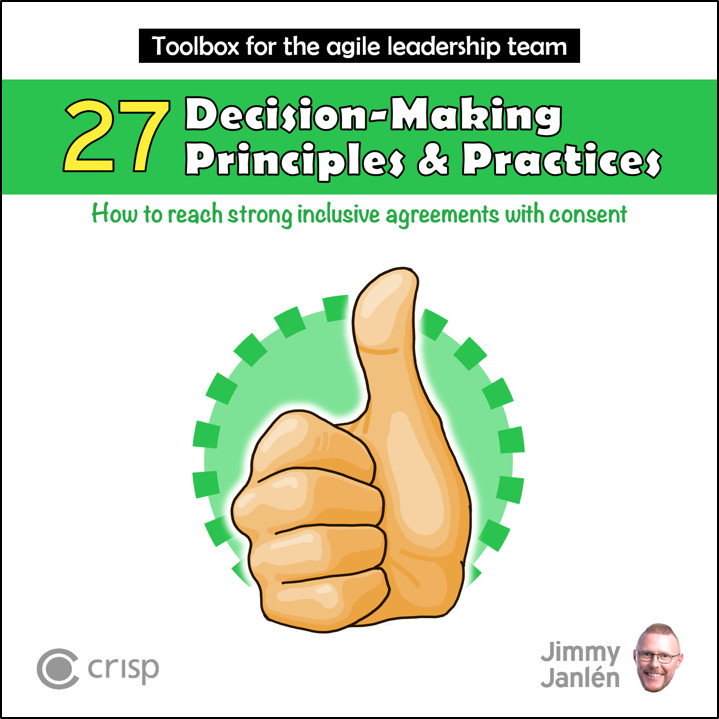A conversation with long-time Crisp collaborator Jonathan ReamsSummary (Abstract) AI is accelerating our tools—and our context. In this Leading Complexity Podcast episode, Jonathan Reams argues that leaders must grow their inner capacity at least as fast as AI evolves, or risk being led by the very systems they deploy. We explore how adult development, complexity
Continue readingLeading Complexity – Year 4: Navigating the Age of AI (and Everything Else)
Three years ago, we launched the Leading Complexity Program with a simple but urgent question: How do we lead when the world is changing at an exponential pace? Organizations everywhere were feeling the pressure of complexity—messy systems, rapid change, and no playbook for how to lead when everything’s connected, changing fast, and increasingly unpredictable. As
Continue readingInterview with Woody Zuill – Software Teaming (Mob Programming) – addressing complexity with genuine collaboration.
We are excited to have Woody Zuill teach a Master Class in this fall’s leading complexity program. The topic is Software Teaming (Mob Programming)—addressing complexity with genuine collaboration. Woody coined the concept of Mob Programming/ Software Teaming, wrote books on the topic, and traveled the world spreading the ideas. Recently, we had the opportunity to
Continue readingInterview with Bonnitta Roy – Thinking with Complexity
We spoke with Bonnitta Roy about her upcoming Master Class in this year’s leading complexity program for the fall. The topic is Thinking with Complexity: Post-Formal Actors, Protocols, and Complex Potential States. Bonnitta is an author, researcher, complexity thinker, business developer, and teacher. She integrates many fields: Natural Sciences, Living Systems, Consciousness Studies, Relational Processes,
Continue readingInterview with Peter Block – Leader as Convener
You have been missing out on whether you are a consultant, coach, or leader and have yet to become familiar with Peter Block. We are fortunate to have Peter in this year’s leading complexity program for the fall. He is mainly known for his books on Flawless Consulting and Stewardship. However, his latest writing on
Continue readingPeter Block – Leader as Convener
Peter Block might not be the most well-known thought leader in the Agile community, but he’s one of the thought leaders who have had the most influence on our success as consultants, coaches, and leaders. We are excited to have him in this year’s leading complexity program for the fall. We have long wished to
Continue readingInterview with Simon Wardley
We proudly present Simon Wardley, one of this year’s teachers, in our Leading Complexity Program starting September 2023. Here is a summary of the interview below. M: Hi, Simon. It’s great to have you on the program this year. Could you briefly say who you are for those who don’t know you? S: I am
Continue readingSonja Blignaut – Leading in Complexity by Curating Context
Throughout the Leading Complexity program, we have had the opportunity to learn from the best thinkers in leadership and complexity. One of them Sonja Blignaut. As a meteorologist, she has a fascinating natural sciences background, giving her a unique perspective on human systems. In her session, she shared some of her latest thinking, which she
Continue readingStephen Bungay and the Art of Leadership
Summary of Stephen Bungay’s session in the Leading Complexity Program 2022. Leadership and direction setting are essential components of any successful business strategy. One of the very best thought leaders on business strategy that is well familiar to Crisp is one of last year’s Leading Complexity keynote speakers Stephen Bungay. Not only is he an
Continue readingInterview with Doug Kirkpatrick
M: Hi, Doug. Great to have you in the Leading Complexity program for the fall. You have been a guest with Crisp before, but for those who don´t know you, who are you? D: Thanks, Michael. I am Doug Kirkpatrick. I helped start Morningstar over 30 years ago here in Northern California. Morningstar organized around
Continue readingLeadership as an investment in the digital age (slides)
I had the pleasure to run a presentation for company leaders @ Åland on Leadership in the digital age. In the presentation : I want to credit to Roland Granlund for showing me and living – Leadership as an investment. Download the slides here.
Continue readingAdvice to become ready for a transformation
How to prepare and align as a leadership team for a major change in your organization
You are a senior leader in your organization, and you are facing some challenges. You have had that slow hunch for some time now that there are plenty of things that are just not right. Things beyond just individual isolated problems. People in your organization often bring up small things that should be looked at because they seem to be connected to plenty of recurring friction points in several places that hold people back.
You have also come to realize that there are a few big things we have to change to really tap into our potential. If we don’t, our goals may never come within reach. Maybe even worse, we may risk losing ground.
You feel you share this view with some of your colleagues on your senior leadership team. But you are not certain to what extent they see what you see and how they would explain what needs to change.
You want to take the initiative, but you are not sure about how.
How do we know if we are ready to start a major change effort, and what do we need to do to get there if more work is needed?
Introducing: The Agile Leadership Practice Library
Have you ever wrestled with these questions in a leadership scenario?
“How can I get the company to be more proactive and self organized without me being around all the time?”
“I’m a practical guy, I get most theories, but what do I do with them?”
“What is a good start when we are talking about building an Agile organization?”
If so, then this is for you.
Today the Agile Leadership Practice Library is launched
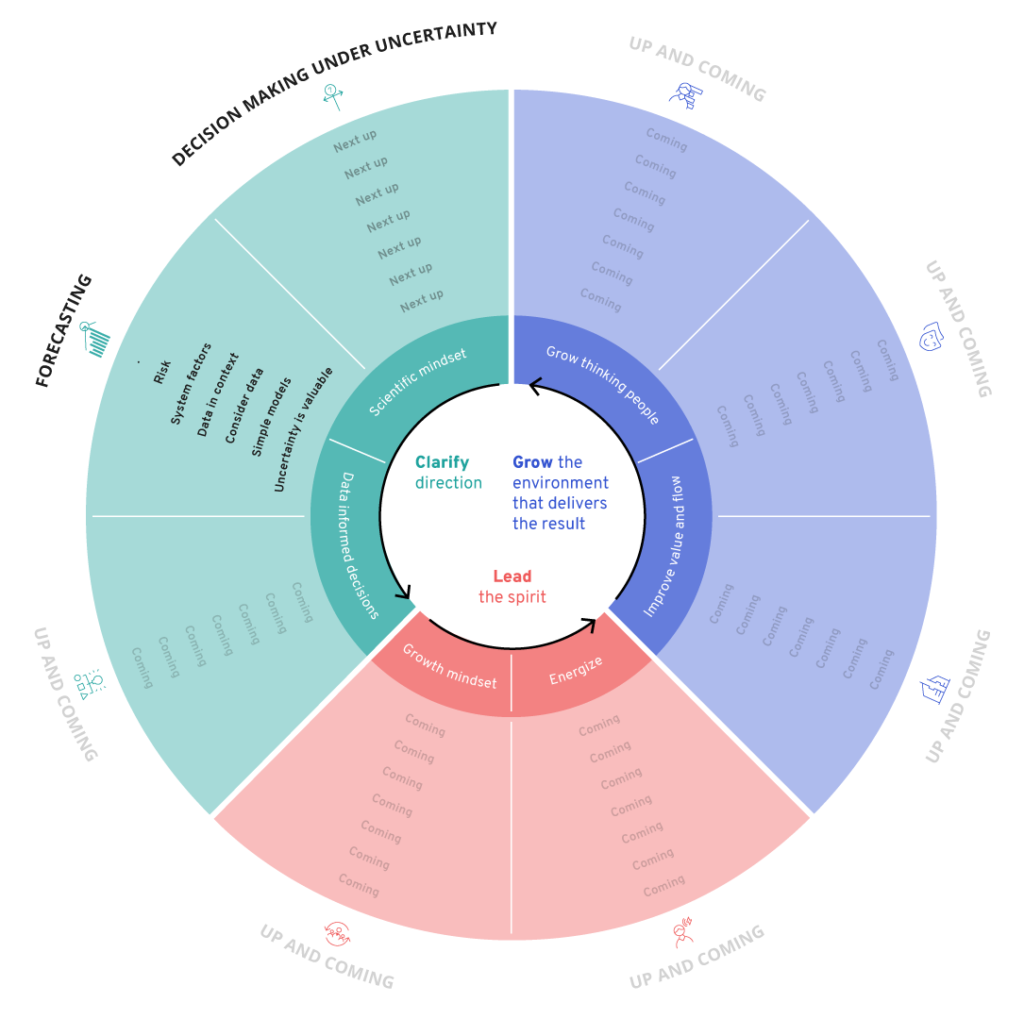
Continue reading
Video: Improve your decision making under uncertainty, using four simple techniques
4 simple techniques to improve decision making, in time of uncertainty
Continue readingShape the future – share an act of leadership!
What does it take to lead in an Agile environment? You have probably seen inspiring acts of leadership that made a difference. We’d like to hear about it! Today we launch activeagileleadership.com. A platform for leadership insights and practices in Agile environments. Want to know more? Let’s start with Mindset. Leading in an Agile environment
Continue readingIntegrating Discovery & Delivery – Patterns that work

This is the second article in my series on integrating discovery and delivery. In the first article I outlined some common challenges I have seen holding organizations back from benefiting fully from both.
In this article I will introduce some patterns that will help you integrate product discovery and product delivery in a way that works. These patterns have all been field tested in practice.
Continue readingIntegrating Discovery & Delivery – Common Challenges

Most organizations that I meet in my work are struggling to integrate product discovery and agile delivery in a simple practical way that works.
I will illustrate what I mean by giving you examples of a couple of very common issues.
Continue readingComparison of three strategy alignment frameworks – OKRs, Spotify Rhythm and Art of Action Strategy Briefing
A downloadable version of this article can be found here.
One of the strongest management trends right now in companies striving towards Agile is undoubtedly OKRs, “Objectives and Key Results”.
But how do OKRs stack up against the alternatives when it comes to alignment frameworks? And what are the potential undesirable behaviors that come with them?
That is what I intend to explore in this article.
Continue readingInterview with Stephen Bungay on Strategy Execution and the gaps of OKR’s
Interview with Stephen Bungay on:
– What is the “Art of action” ?
– What is the differences/similarities to OKR’s?
– What organisational capabilities needs to be there, for alignment frameworks to really work?
En definition av Agilt mindset

Vad är ett Agilt mindset och hur beskriver man det?
Det är en fråga jag fick finna svar på i och med det sista tillfället i Scrum Master programmet Mia Pilebro (agil coach på arbetsförmedlingen) och jag genomförde på Arbetsförmedlingen. Denna artikel beskriver den definition jag landade i, resonemanget bakom samt varför detta är viktigt då man förändrar en organisation mot en Agil kultur och arbetssätt. De definitioner jag hittade när jag sökte svar på frågan kändes inte kompletta, enligt mitt tycke. Efter diskussion med mina kollegor på Crisp, och med Mia, landade jag i en definition som består av ett antal påståenden, hållningar och en intention.
Continue readingMake OKRs and Forecasts come alive!
Rigid detailed long-term plans, where progress is tracked based on consumed budgets, are in agile organizations quickly becoming a fading nostalgic memory of the past. They are replaced by forecasts and non-static roadmaps. Gather regularly in front of these visualizations and you will enable learning, sharing and trigger important conversations, resolve dependencies and invite to acts of servant leadership. Make your OKRs and Forecasts come alive!
In this blog I want to give examples of visualizations with accompanying recurring ceremonies. The visualization and accompanying ceremony enable sharing of progress and ensure that impediments and dependencies continuously are addressed and mitigated. It also turns the forecast into a conversation (as opposed to a fixed estimate captured in a project plan that is treated as a promise).
The core question the involved teams answer is:
“How confident do you feel that you will accomplish the Key Result before the end of this quarter?”
Evolutionär förändring
Inledning
Ser jag tillbaka på mina år som konsult och coach på Crisp har det skett en rätt stor förändring i vilka typer av uppdrag vi får. Många organisationer möter en allt mer föränderlig omvärld med snabbfotade kunder; är de inte nöjda med det utbud som organisationen levererar går det till en konkurrent i stället. Det räcker inte längre med att enskilda team fungerar bättre; hela organisationer behöver förbättras för att nödvändiga effekter skall skapas.
För att lyckas med förändringsarbetet behöver vi:
- Utgå från att organisationer är komplexa system vilket kräver en organisk förändring snarare än ett plandrivet och mekaniskt sådan.
- Genomför förändringen evolutionärt drivet genom de hinder som teamen upplever,
- Successivt forma den struktur och arbetssätt som just den specifika organisationen bäst behöver för att leverera värde.
Anti-Agile Personalities – Part 2
In my previous blog post I listed personalities on the management side that stood in the way of efficient, modern product development. In this post, I will cover some of the personalities you might find in the actual development teams.
Continue readingEfficient, effective and inclusive decision-making – A bold statement, a book and a video
I hereby proclaim that; there are ONLY 10 different ways a decision can be made!
At least in a meeting with several participants.
Sorry for starting with this click baity statement. On the other hand – I haven’t been disproven so far. Regardless of if this is true or not, I believe that the art and skill of decision-making is an increasingly important topic. Why do I believe that?
In many organizations, I often encounter the assumption that a decision is either made by one person, or by a group that has discussed a proposal until everyone agrees. If this is actually true, your ability to conduct effective, efficient and inclusive decision-making is sadly limited. A rapidly increasing number of companies go agile, organizing people into a network of autonomous teams, supported by teams of managers and leaders.
Decision-making and ownership are decentralized to those closest to the problems and opportunities. Leadership is no longer manifested in hierarchies of individual accountability, but in interconnected layers of supportive leadership teams. Just as agile teams collaborate to delivering value to users and customers, so must the leadership collaborate when working, meeting and making decisions. A leadership team’s ability to reach a shared understanding through debates and discussions, explore options and then together decide on the best path forward – is crucial. The speed to decision and time to review and evaluate the impact will dictate your whole organization’s ability to quickly respond, learn, adapt and improve.
With this blog I hope to expand your toolbox and inspire you to experiment with a more varied approach to decision-making.
.
Continue readingAnti-Agile Personalities – Part 1
The technology development is going in lightning speed nowadays and almost every company has at least 10 competitors who can offer their customers the same or better experiences or goods. This puts quite a lot of pressure on companies and organisations to be nimble and customer focused which in turn does the same on the people working for them. Certain traits have become more important in employees than before, whether it is management or development teams, such as trust, flexibility, passion, curiosity, ability to collaborate, humility, and innovativeness. It also means that personalities not defined by these traits that still worked very well in traditional, hierarchical organisations actually might be obstructing efficient development in modern organisations.
Three Myths About Strategy
Three Myths About Strategy, by Stephen “Art of Action” Bungay.
Continue readingHow self driving car company AID builds its organisation using Agile – interview with the CEO
How do you grow, innovate, and deliver – at the same time? AID (Audi’s unit for self-driving cars) uses Agile to build its organisation at the same pace as their product. We interviewed their CEO Karlheinz Wurm on why they have chosen to do so. We also sneaked in a question – how is it
Continue readingHealth checks for Teams and Leadership
In this blog post I want to share a powerful tool, the Leadership Health Check. It will help you become stronger as a management team and reveal improvement opportunities for how you, as a team of active servant leaders, better can enable the agile teams you support.

But first, let’s take it from the beginning.
One of my favourite exercises in my toolbox as an agile coach is something I learned during my years at Spotify; the Squad Health Check. It’s a retrospectives format, a self-evaluation workshop, in which the teams express how they feel they’re doing on wide variety of topics such as collaboration, value of what is delivered, ability to influence, received organizational support, etc. The result generates insights and commitment to actions of improvement for both the team and the supporting leadership. I love it because I believe it’s a great tool for strengthening autonomy, culture and continuous learning.
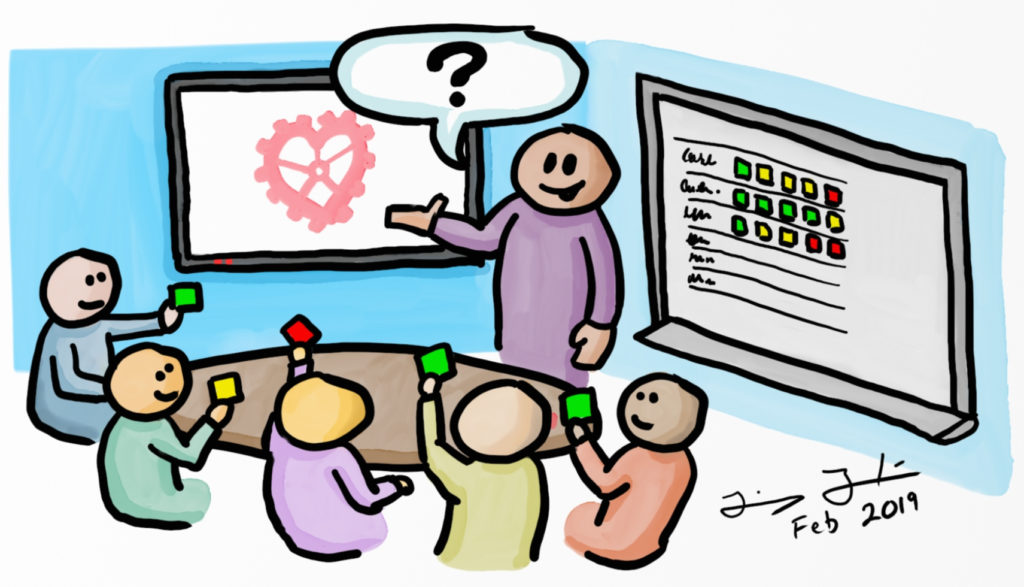
More than a year ago, a colleague at Spotify Georgiana Laura Levinta and I created a health check for the leadership of our Tribe (Tribe is a semi-autonomous department at Spotify encapsulating 4-8 teams and with a dedicated set of leaders and managers). Geo and I were inspired by the Squad Health Check, but the goal with this adoptation was to help the Tribe’s managers perform a self-evaluation of their ability to provide active supportive leadership to the squads within the tribe, and to generate a discussion on how they can improve as a team to be able to provide even better support.
Since then, I have together with my current client Casumo, adopted this for their context, culture and beliefs. We’ve run it several times with great success and value, both with the company’s leadership team but also on cluster level (semi-autonomous department). I believe the Team Health Check and the Leadership Health Check both are tremendously powerful; hence I want to unleash them to the wider agile community, hoping that more organizations will find them valuable and useful. Or at least be inspired by them, and then try something totally different.
The CTO Questions: 10 questions that help you gauge the current state of your tech operations
Ever heard this conversation play out? Manager 1: “We should adopt scaling framework Y.” Manager 2: “But scaling framework Y doesn’t have a recipe for baking cookies. So we need to do X.” Manager 3: “Whut? You’re both wrong. We have Agile teams. We’re good!” In fact, each statement above can be wrong. So the
Continue readingSlides from Agile Islands 2018 -“Decision making under uncertainty”
Åland has one of the coolest visions out there – build an Agile society. They also arrange Agile Islands, a small conference but with sharp content. This year I had the pleasure to speak, so I decided to shed some light on “Decision making under uncertainty”, which is a fascinating subject. Here are the slides. Cheres
Continue reading


